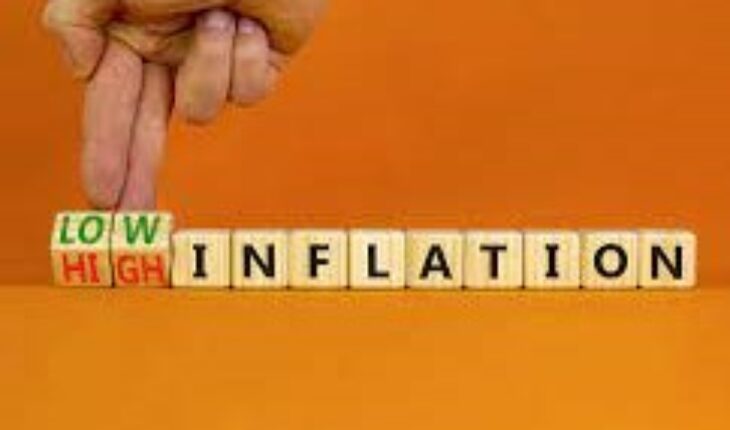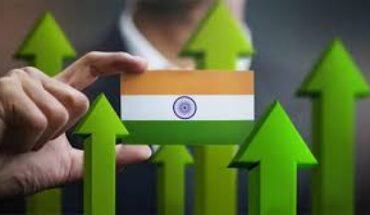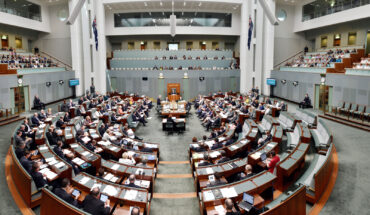
According to the Ministry of Statistics and Program Implementation, consumer price index (CPI) based inflation stood at 4.25 per cent in May 2023. In the month of April, it was at the level of 4.7 percent, while in May 2022 it was 7.04 percent. Earlier in April 2021, the retail inflation was 4.23 percent. This is the fourth consecutive month when retail inflation has come down. At the same time, this is the third month in a row, when retail inflation is less than 6 percent, the maximum limit set for inflation by the Reserve Bank of India. It may be noted that the retail inflation was 6.44 per cent in the month of February 2023, while it was 6.52 per cent in the month of January 2023.
The analysis shows that inflation has moderated due to lower food and fuel prices. Food inflation was 2.91 per cent in May, compared to 3.84 per cent in April. At the same time, fuel inflation stood at 4.64 per cent in May, compared to 5.52 per cent in April. Inflation is directly related to the purchasing power of a person. For example, if the inflation rate is 10 per cent, then out of your Rs.100 earning, you will have to spend Rs.10 more just because of the increased cost of commodities and food items.
The positive result of reduction in inflation is visible on industrial production. Industrial production in the month of April has been 4.2 percent, while the Index of Industrial Production (IIP) has increased by 6.7 percent in the month of April. According to data from the National Statistical Office (NSO), the manufacturing sector grew by 4.9 per cent and mining by 5.1 per cent in April. At the same time, a decline of 1.1 percent has been recorded in electricity production. Reduction in electricity production is not good for growth, because by the help of electricity, any kind of production including industrial production may be feasible. Despite, decline of 1.1 percent is nominal. its negative impact will not reflect much more.
Due to the softening of inflation, the central bank has kept the repo rate unchanged at 6.50 percent in the latest monetary review, while the Reserve Bank has increased the repo rate by 250 basis points since May last year. Prior to this, the Reserve Bank had increased the repo rate for 6 consecutive times. This decision of the Reserve Bank is being considered unexpected, because recently all the central banks of the world including the Federal Reserve, European Central Bank, Bank of England had increased the policy interest rates. Though, in my opinion, the decision of keeping repo rate unchanged is wise decision of Reserve Bank, because, in India inflation is low, but in developed countries, inflation is still high & there is direct link between inflation & repo rate.
Keeping the repo rate unchanged will provide relief to the borrowers on the one hand and on the other hand the pace of development will accelerate. The Reserve Bank wants the recovery of the economy to accelerate further. Due to not increasing the repo rate by the Reserve Bank, there has been a rise in the shares of banks in the stock market. At the same time, the rupee has depreciated against the US dollar. The rupee depreciated from 81.88 to 82.06, but the fall in the value of the rupee is minimal and its negative impact on the economy is almost negligible. Last year, the rupee recorded less volatility compared to Asian currencies.
The Reserve Bank tries to fight inflation mainly by increasing the repo rate. When the repo rate is high, banks get loans from the Reserve Bank at a costlier rate, due to which banks also give loans to customers at a costlier rate. By doing this, the liquidity of money in the economy decreases and due to lack of money in the pockets of people, the demand for goods decreases. Similarly, due to higher price of goods and products, their sales decrease, which leads to inflation.
Similarly, to speed up the developmental works when the economy is soft, efforts are made to increase the liquidity of the currency in the market and for this also the repo rate is cut, so that the banks get loans from the Reserve Bank at a cheaper rate. After getting the loan at the cheaper rate, the bank should also give loan to the customers at a cheaper rate.
Right now, the aim of the Reserve Bank is to strike a balance between growth and inflation, so that the common man does not suffer, and the pace of development accelerates. According to Reserve Bank Governor Shri Shaktikanta Das, banking and non-banking financial institutions (NBFCs) remain strong in India despite the corona pandemic, geo-political crisis, inflation, slowdown in the global economy.
Gross Domestic Product (GDP) stood at 6.1 percent due to a significant reduction in inflation in the past months, while in December 2022 the Monetary Policy Committee (MPC) projected GDP to be 4.2 percent in the last quarter of the financial year 2022-23. Due to the improvement in the GDP growth rate in the fourth quarter of the financial year 2022-23, the growth rate of the entire financial year has also been improved. In the first financial year 2022-23, the MPC had estimated 6.8 percent of GDP, which was 7.2 percent.
In the financial year 2022-23, the growth rate in the agriculture sector was recorded at 5.5 percent, in the hotel industry at 9.1 percent and in the construction sector at 10.4 percent. These three sectors have made special contribution in improving the growth rate of GDP. Along with the increase in GDP, investment and consumption are also seeing a boom. In the first quarter of the year 2023, an increase of 18.3 percent in investment rate and 13.4 percent in consumption was recorded. The main reason for the increase in investment is the “Production-Linked Incentives” (PLI) scheme of the government. Due to this scheme, businessmen got special help to get out of difficult times during the Corona period.
It is clear from the available facts, due to inflation, there is a negative impact on the GDP growth rate. Inflation had remained at a high level continuously for the past years, but now inflation is coming down. Therefore, speculations are being made that in the coming months India’s growth rate will accelerate further and the economy will also become stronger gradually.
Satish Singh, Ahmedabad based Senior Journalist ,Views are personal.
Mobile No.8294586892






